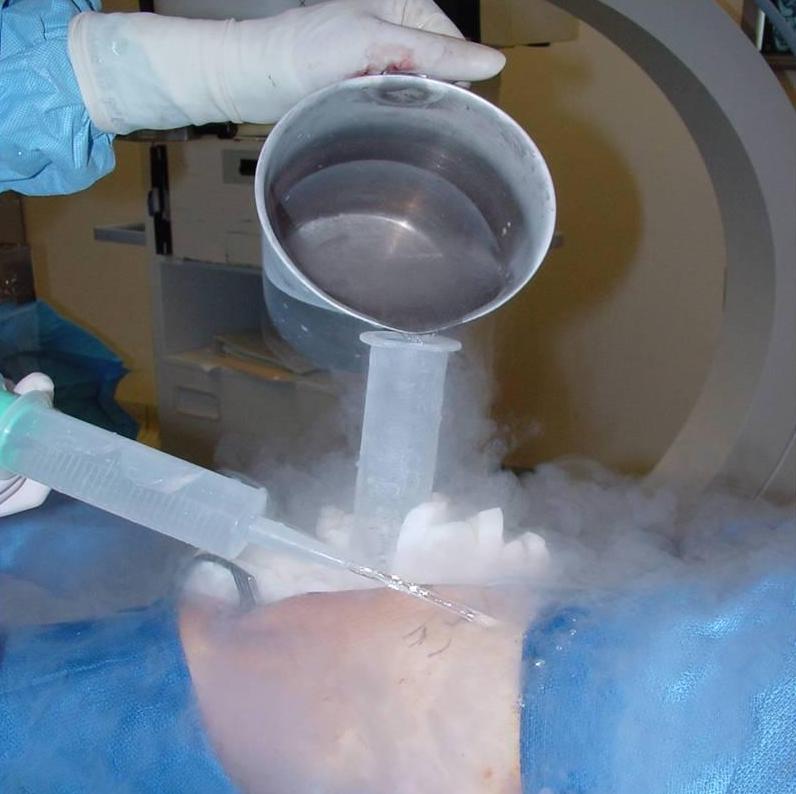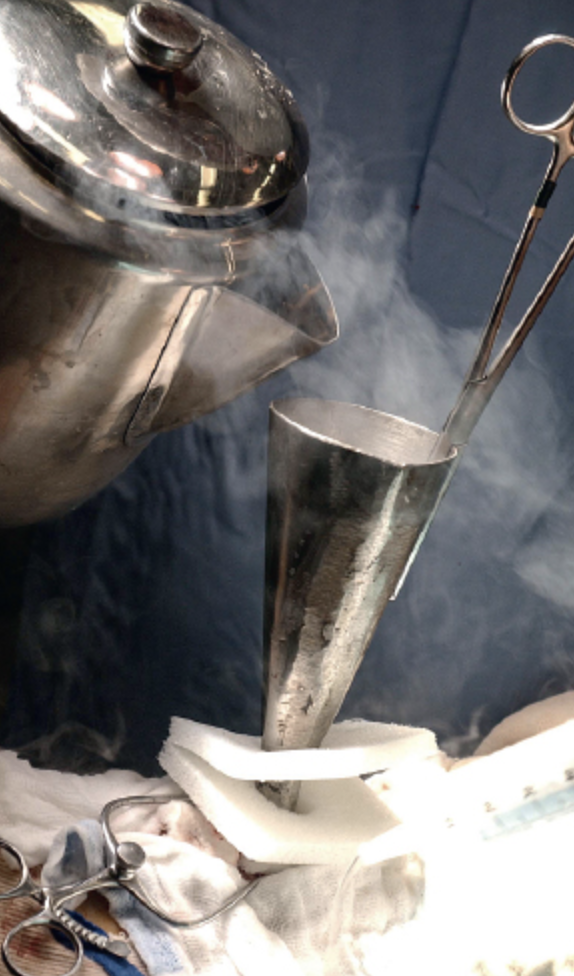Cryosurgery
Cryosurgery is used in addition to surgery. It is a specialized technique that only a handful of surgeons in the country know how to perform. It is used to kill microscopic tumor cells.

Cryosurgery is used in addition to surgery. It is a specialized technique that only a handful of surgeons in the country know how to perform. It is used to kill microscopic tumor cells.

Cryosurgery is a technique used for noncancerous aggressive tumors and occasionally slow-growing cancers of bone. The method involves the use of liquid nitrogen to freeze a tumor cavity to sub zero temperatures in order to kill microscopic tumor cells and reduce the chances of the tumor returning. Cryosurgery is used as an addition to surgery. It is a specialized technique that only a handful of surgeons in the country know how to perform. It is used most commonly for benign aggressive tumors (giant cell tumor, aneurysmal bone cysts, chondroblastoma, chondromyxofibroma, desmoplastic fibroma, osteoblastoma) and for low grade cartilage tumors (chondrosarcomas) and chordomas of the sacrum.
The tumor is first scooped out from the bone in a procedure called curettage. After, liquid nitrogen is poured into the tumor cavity once the tumor is removed, instantly freezing any remaining microscopic cells. This significantly decreases the chances of the tumor coming back. We then wait until the frozen cells thaw slowly. This allows the ice crystals to combine inside the cells, bursting the cells and killing the tumor. We protect the healthy tissues with insulation called Gel Foam and irrigate the normal tissues with warm solution during the freezing process. The result is a cavity in the bone that must be restored and protected so that the bone does not break. We often fix the cavity with bone cement and metal fixation devices. Sometimes bone graft will be used in conjunction with the cement or all by itself to fill the cavity. If only curettage is performed without cryosurgery during the procedure, there is a 30%-70% chance of the tumor returning and causing more destruction of the bone, potentially requiring removal of the bone and reconstruction with a prosthesis or even occasionally requiring an amputation. Once a tumor comes back once, it may come back multiple times.

After your surgery you will be recuperating at home. For the first few days you will ice the area and keep it elevated to reduce swelling. You will return to the office 2 weeks after surgery. Depending on what is done during surgery you may be non-weight bearing for a period of time. Once cleared, you will subsequently start physical therapy. We usually prescribe physical therapy 3 times a week for 12 weeks after surgery.
You will be monitored periodically with X-rays over the course of 5 years. Sometimes an MRI and/or CT may be used to additionally monitor the area to make sure the tumor has not come back. You will then have follow up appointments every 4 months for the first 2 years, then every 6 months for the next 2 years, and then once a year. Since the bone integrity has been restored to full or almost full, recovery is anticipated provided the patient adheres to strict physical therapy.

Dr. James Wittig narrates a video illustrating the surgical technique for resection of a sacrococcygeal chordoma, using cryosurgery as an adjuvant therapy. | WATCH VIDEO